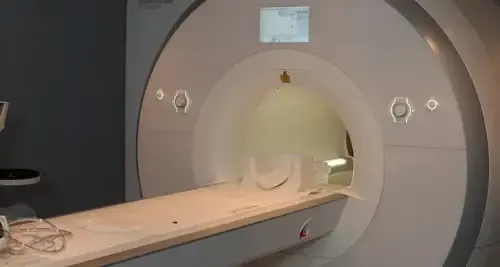Adult Hip Dysplasia
"Proper selection of patients for non-arthroplastic surgical alternatives can improve their prognosis possibly by reducing or delaying degenerative changes".
DR. JORGE GÓMEZ
SPECIALIST. ORTHOPEDIC SURGERY AND TRAUMATOLOGY DEPARTMENT

Adult hip dysplasia (AHD) is a clinical entity that results from the abnormalities in the development of the acetabulum roof or from the consequences of failed treatment to correct it.
If the head of the femur is not completely covered by the acetabulum, it tends to leak out.
This situation causes the hip to wear out more quickly than is considered normal with age.
The problem usually occurs in young adults, who may or may not have a history of being treated for hip disease in childhood.

What are the symptoms of adult hip dysplasia?
Depending on the degree of affectation, they present progressive pain that increases with activity, especially with hyperextension movements and lateral rotation of the hip.
When there are intra-articular injuries (especially of the labrum), it causes pain to bring the leg to a forced flexion with internal rotation and adduction. Frequently there is pain in the groin after practicing sports, prolonged standing or long walks.
If they are not treated in time with corrective operations, they will develop a wear of the joint that we know as arthrosis.
The most common symptoms are:
- Pain when walking.
- Functional disability.
- Loss of strength.
Do you have any of these symptoms?
You may have hip dysplasia
How is hip dysplasia diagnosed?

For the diagnosis of adult hip dysplasia, it is necessary to perform tests that include a gait assessment, measure the length of the limbs, determine muscle strength, mobility arches and perform special tests.
Single x-rays in the antero-posterior (AP) projection of the pelvis and lateral hips are the first steps in the imaging evaluation.
MRI is only indicated to rule out the presence of labral or chondral structural abnormalities, therefore, when there are symptoms that suggest intra-articular alterations associated with bone malformations.
How is adult hip dysplasia treated?
Adult hip dysplasia (AHD) that is asymptomatic or has minimal symptoms should be treated conservatively.
The most important thing is to inform the patient about the natural history of AHD and to advise him/her to have regular check-ups to measure the development of osteoarthritis.
The concept of a healthy lifestyle where weight control, proper nutrition and exercise are fundamental must be reinforced. It should also be recommended to avoid high impact activities on the hip and prolonged walking.
Nonsteroidal anti-inflammatory agents may be helpful during periods of pain.
Young patients with ACD are not good candidates for arthroplasty because they do more activities and with greater intensity than an older adult and also because of the absence of marked degenerative changes.
Proper selection of these patients for non-arthroplastic surgical alternatives can improve their prognosis by possibly reducing or delaying degenerative changes and avoiding the potential problems associated with total hip replacement.
- Arthroscopic surgery: Arthroscopy should be reserved for patients with minimal bone abnormalities but suspected intra-articular pathology (e.g., labial breaks, free bodies, chondral defects, or synovitis).
- Osteotomies: The objective of an osteotomy should be the restitution of the articular congruence in a hip that does not show advanced degenerative changes, since with it the mechanical operation will be improved, the reactive changes are diminished and therefore the pain.
The arthroplasty or hip prosthesis is an excellent form of treatment despite the fact that the associated anatomical abnormalities increase the technical complexity and decrease in young people the chances of longevity of the implant.
Hip arthroplasty is the procedure of choice for most patients with advanced coxarthrosis secondary to hip dysplasia.
The associated anatomical alterations increase the complexity of hip dysplasia arthroplasty.
Where do we treat it?
IN NAVARRE AND MADRID
The Department of Orthopedic Surgery and Traumatology
of the Clínica Universidad de Navarra
The Department of Orthopedic Surgery and Traumatology covers the full spectrum of congenital or acquired conditions of the musculoskeletal system including trauma and its aftermath.
Since 1986, the Clinica Universidad de Navarra has had an excellent bank of osteotendinous tissue for bone grafting and offers the best therapeutic alternatives.
Organized in care units
- Hip and knee.
- Spine.
- Upper extremity.
- Pediatric orthopedics.
- Ankle and foot.
- Musculoskeletal tumors.

Why at the Clinica?
- Experts in arthroscopic surgery.
- Highly qualified professionals who perform pioneering techniques to solve traumatological injuries.
- One of the centers with the most experience in bone tumors.




















